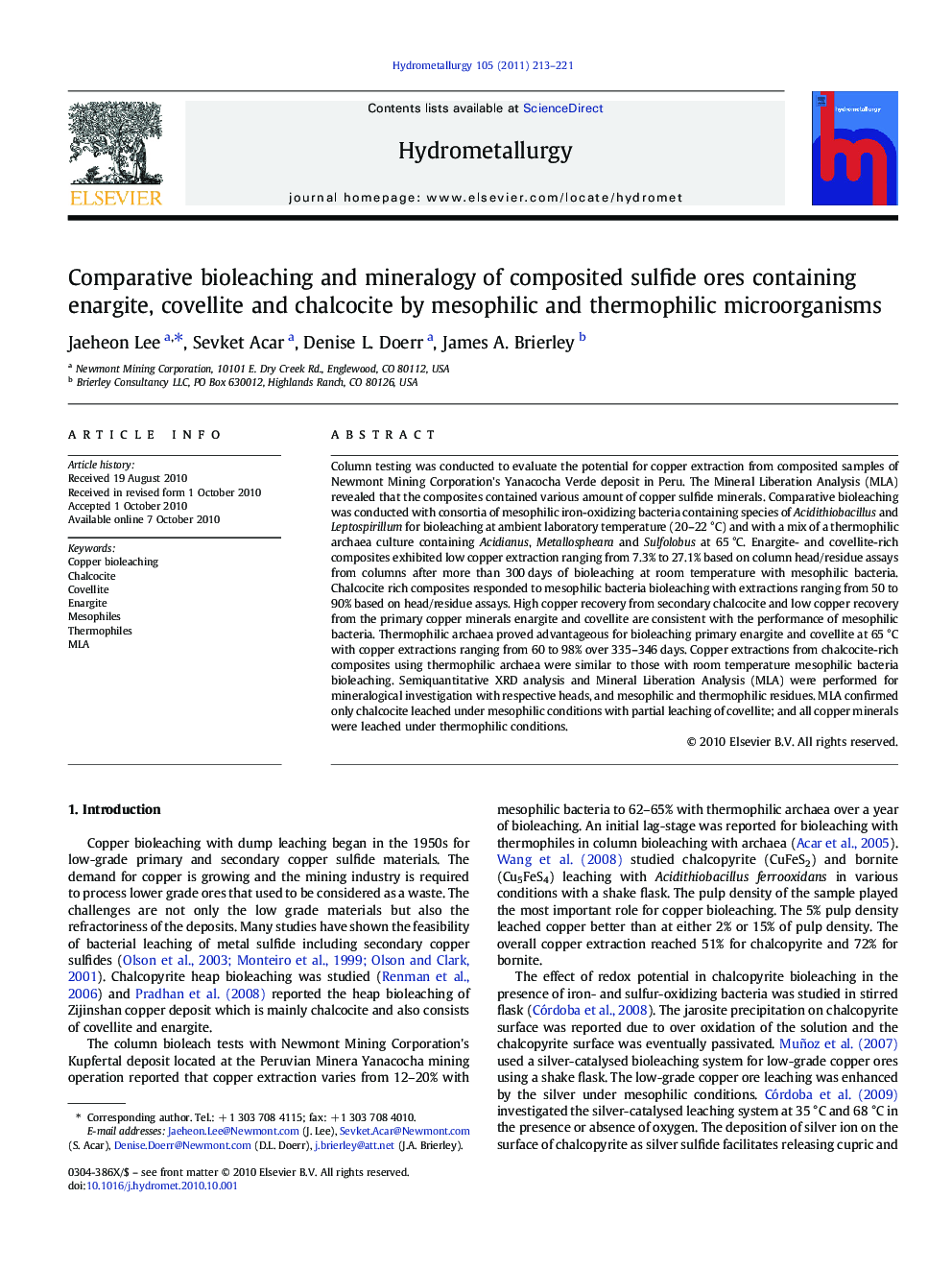| Article ID | Journal | Published Year | Pages | File Type |
|---|---|---|---|---|
| 212714 | Hydrometallurgy | 2011 | 9 Pages |
Column testing was conducted to evaluate the potential for copper extraction from composited samples of Newmont Mining Corporation's Yanacocha Verde deposit in Peru. The Mineral Liberation Analysis (MLA) revealed that the composites contained various amount of copper sulfide minerals. Comparative bioleaching was conducted with consortia of mesophilic iron-oxidizing bacteria containing species of Acidithiobacillus and Leptospirillum for bioleaching at ambient laboratory temperature (20–22 °C) and with a mix of a thermophilic archaea culture containing Acidianus, Metallospheara and Sulfolobus at 65 °C. Enargite- and covellite-rich composites exhibited low copper extraction ranging from 7.3% to 27.1% based on column head/residue assays from columns after more than 300 days of bioleaching at room temperature with mesophilic bacteria. Chalcocite rich composites responded to mesophilic bacteria bioleaching with extractions ranging from 50 to 90% based on head/residue assays. High copper recovery from secondary chalcocite and low copper recovery from the primary copper minerals enargite and covellite are consistent with the performance of mesophilic bacteria. Thermophilic archaea proved advantageous for bioleaching primary enargite and covellite at 65 °C with copper extractions ranging from 60 to 98% over 335–346 days. Copper extractions from chalcocite-rich composites using thermophilic archaea were similar to those with room temperature mesophilic bacteria bioleaching. Semiquantitative XRD analysis and Mineral Liberation Analysis (MLA) were performed for mineralogical investigation with respective heads, and mesophilic and thermophilic residues. MLA confirmed only chalcocite leached under mesophilic conditions with partial leaching of covellite; and all copper minerals were leached under thermophilic conditions.
Research highlights►Covellite and enargite were not leached by mesophilic bacteria. ►Thermophilic archaea leached chalcocite, covellite and enargite. ►Covellite and enargite samples under thermophilic condition showed long lag time. ►A series of draining and reinoculating decreased the lag time. ►Chalcocite was leached well by both mesophilic and thermophilic microorganisms. ►Covellite and enargite were refractory by mesophilic bacteria. ►Chalcocite is associated with pyrite and covellite is usually rimmed around pyrite. ►Large grains are the most common form of enargite. ► Leached chalcocite or covellite voids were readily observed in the leach residue.
